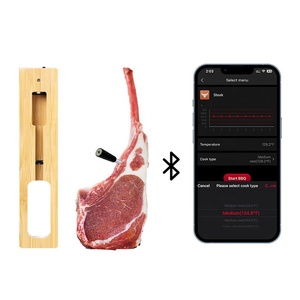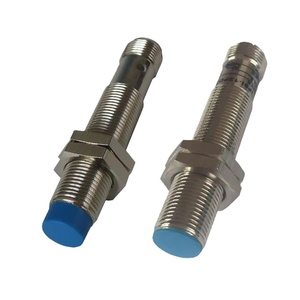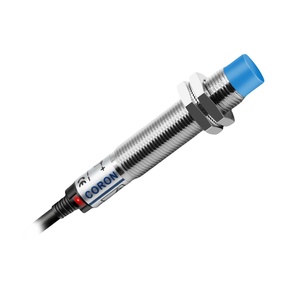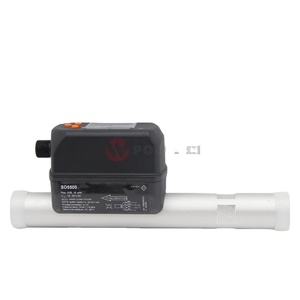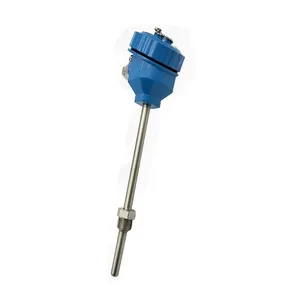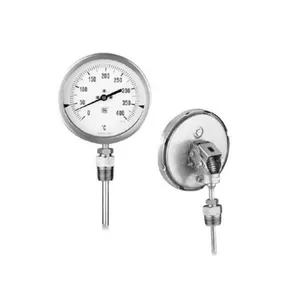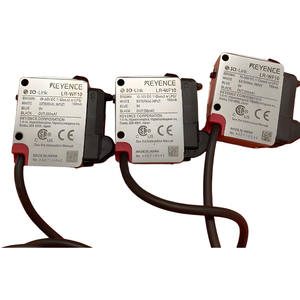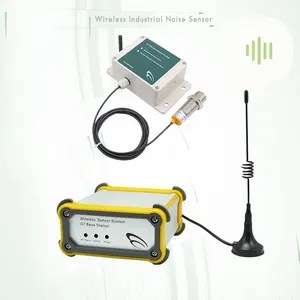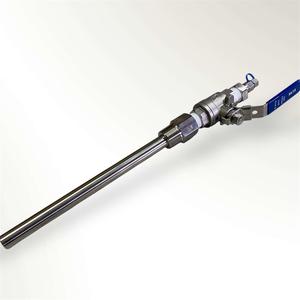Type Of Sensor Used In Industry





 Top sponsor listing
Top sponsor listing






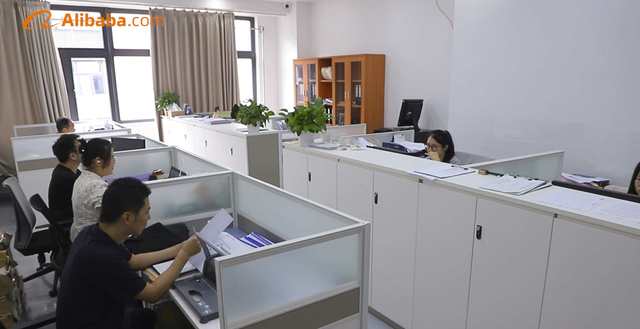







































About type of sensor used in industry
Where to Find Industrial Sensor Suppliers?
China remains a central hub for industrial sensor manufacturing, with key production clusters in Hubei, Jiangsu, Zhejiang, and Guangdong provinces. These regions host vertically integrated supply chains that support rapid prototyping and scalable production of sensors used in automation, process control, and condition monitoring systems. Wuhan and Yangzhou in central China specialize in optical, proximity, and ultrasonic sensors, benefiting from established electronics component ecosystems and government-backed industrial parks focused on smart manufacturing technologies.
The Pearl River Delta, particularly Shenzhen, dominates in semiconductor-level sensor modules and motion detection components, leveraging dense networks of IC suppliers and surface-mount technology (SMT) facilities. This regional specialization enables cost efficiencies of 15–25% compared to equivalent Western or Southeast Asian suppliers. Buyers gain access to streamlined sourcing through localized assembly lines, where lead times for standard sensor units average 10–20 days, with customization cycles extending to 25–35 days depending on complexity.
How to Choose Industrial Sensor Suppliers?
Selecting reliable partners requires structured evaluation across technical, operational, and transactional dimensions:
Technical Expertise & Product Range
Prioritize suppliers offering documented expertise in core industrial sensor types: optical, proximity, ultrasonic, temperature, pressure, flow, and vibration sensors. Verify alignment between supplier product portfolios and application requirements—such as IP67-rated enclosures for harsh environments or 4–20mA output signals for PLC integration. Suppliers with dedicated R&D teams are better equipped to support custom calibrations, non-standard housings, and protocol-specific outputs (e.g., IO-Link, Modbus).
Quality Assurance and Compliance
Confirm adherence to international standards including ISO 9001 for quality management and CE/RoHS for electromagnetic compatibility and hazardous substance restrictions. For safety-critical applications (e.g., machine guarding), validate compliance with functional safety standards such as IEC 61508 or ISO 13849. Request test reports for environmental resilience (temperature range, ingress protection) and long-term stability under continuous operation.
Production and Customization Capacity
Assess scalability through the following indicators:
- Minimum order quantities (MOQs) ranging from 1 piece (for high-value sensors) to 100+ units for bulk configurations
- Customization capabilities in materials, color, labeling, packaging, and electrical specifications
- In-house testing infrastructure for performance validation prior to shipment
- On-time delivery rates exceeding 95%, indicating robust production planning
Cross-reference response times (ideally ≤8 hours) and reorder rates as proxies for customer satisfaction and service reliability.
Procurement Safeguards
Utilize secure payment mechanisms that align financial risk with delivery milestones. Require sample validation before full-scale orders, especially for customized variants. Evaluate after-sales support responsiveness and warranty terms covering defects in materials and workmanship over a minimum 12-month period.
What Are the Best Industrial Sensor Suppliers?
| Company Name | Main Products | Customization Options | On-Time Delivery | Response Time | Reorder Rate | Online Revenue | Notable Strengths |
|---|---|---|---|---|---|---|---|
| Chaorong Electronics (Wuhan) Co., Ltd. | Optical Sensors, Proximity Sensors, Ultrasonic Sensors, Safety Relays, Motion & Position Sensors | Color, material, size, logo, packaging, label, graphic | 100% | ≤8h | 15% | US $30,000+ | Broad portfolio in automation-grade sensing; strong customization flexibility |
| Shanghai Pouwell Technology Co., Ltd. | Photoelectric Sensors, Flow Meters, PLCs, HMI Components | Limited data available | 100% | ≤1h | 57% | US $60,000+ | High reorder rate indicates customer retention; fast response; integration with control systems |
| Wuxi Winsun Automation Instrumentation Co., Ltd. | Vibration Sensors, Temperature Sensors, Pressure Transmitters, Flow Meters | Custom range, 4–20mA output, waterproof designs | 100% | ≤1h | 50% | US $20,000+ | Specialized in condition monitoring sensors; proven in bearing and thermal measurement |
| Yangzhou Xiyuan Electronic Technology Co., Ltd. | Humidity Sensors, Velocity Sensors, Accelerometers, Current Sensors | Custom range, output signal, durability features | 100% | ≤2h | <15% | US $10,000+ | Engineering focus on niche sensing applications; higher price points reflect specialized design |
| Shenzhen Yingsitai Electronics Co., Ltd. | Motion Sensor Chips, Industrial-Grade Sensor Modules | Chip-level components; no visible customization | 100% | ≤3h | <15% | US $30,000+ | Low-cost semiconductor sensors; suitable for integration into larger systems |
Performance Analysis
Shanghai Pouwell and Wuxi Winsun demonstrate superior customer loyalty, reflected in reorder rates of 57% and 50% respectively—indicating consistent product performance and service quality. All five suppliers maintain perfect on-time delivery records, suggesting disciplined logistics execution. Response times vary significantly: Shanghai Pouwell and Wuxi Winsun lead with sub-2-hour average replies, enhancing communication efficiency for urgent procurement cycles.
Chaorong Electronics stands out for extensive customization options across aesthetics and form factors, making it suitable for OEM integrators requiring branded or dimensionally tailored sensors. In contrast, Shenzhen Yingsitai focuses on low-cost, chip-level motion sensors priced between $0.50 and $1.00 per unit, ideal for high-volume electronic assembly but limited in standalone industrial deployment. Wuxi Winsun’s emphasis on vibration and temperature instrumentation aligns well with predictive maintenance applications in rotating machinery.
FAQs
What certifications should industrial sensor suppliers have?
Essential certifications include ISO 9001 for quality management, CE marking for EU market access, and RoHS compliance for restricted substances. For safety-related sensors (e.g., light curtains or safety relays), additional standards like IEC 62061 or ISO 13849 may apply. Always request copies of valid certificates and verify their authenticity through issuing bodies.
What is the typical MOQ for industrial sensors?
MOQs vary by supplier and product type. Many manufacturers offer single-piece sampling for evaluation. For production orders, MOQs typically start at 1–10 units for high-end sensors and scale to hundreds for standardized models. Volume pricing usually applies beyond 100 units, with discounts averaging 10–20%.
How long does it take to receive samples?
Sample lead times range from 5 to 15 days, depending on whether the model is standard or customized. Shipping via express courier adds 3–7 days internationally. Suppliers with in-house production tooling can expedite prototypes within 7 days for urgent requests.
Can suppliers customize sensor outputs and housing?
Yes, many suppliers support customization of electrical outputs (e.g., analog 4–20mA, digital PNP/NPN), connector types, cable lengths, and enclosure materials (e.g., stainless steel, ABS). Environmental sealing (IP65/IP67), mounting configurations, and branding (logo printing) are commonly offered. Technical drawings and performance specifications must be provided for engineering review.
Do industrial sensor suppliers support global shipping?
All listed suppliers engage in international trade, with export experience to North America, Europe, and Asia-Pacific markets. Confirm Incoterms (e.g., FOB, CIF) during negotiation and ensure compliance with destination-country electrical safety and EMC regulations. Most suppliers partner with freight forwarders to manage customs documentation and logistics coordination.




